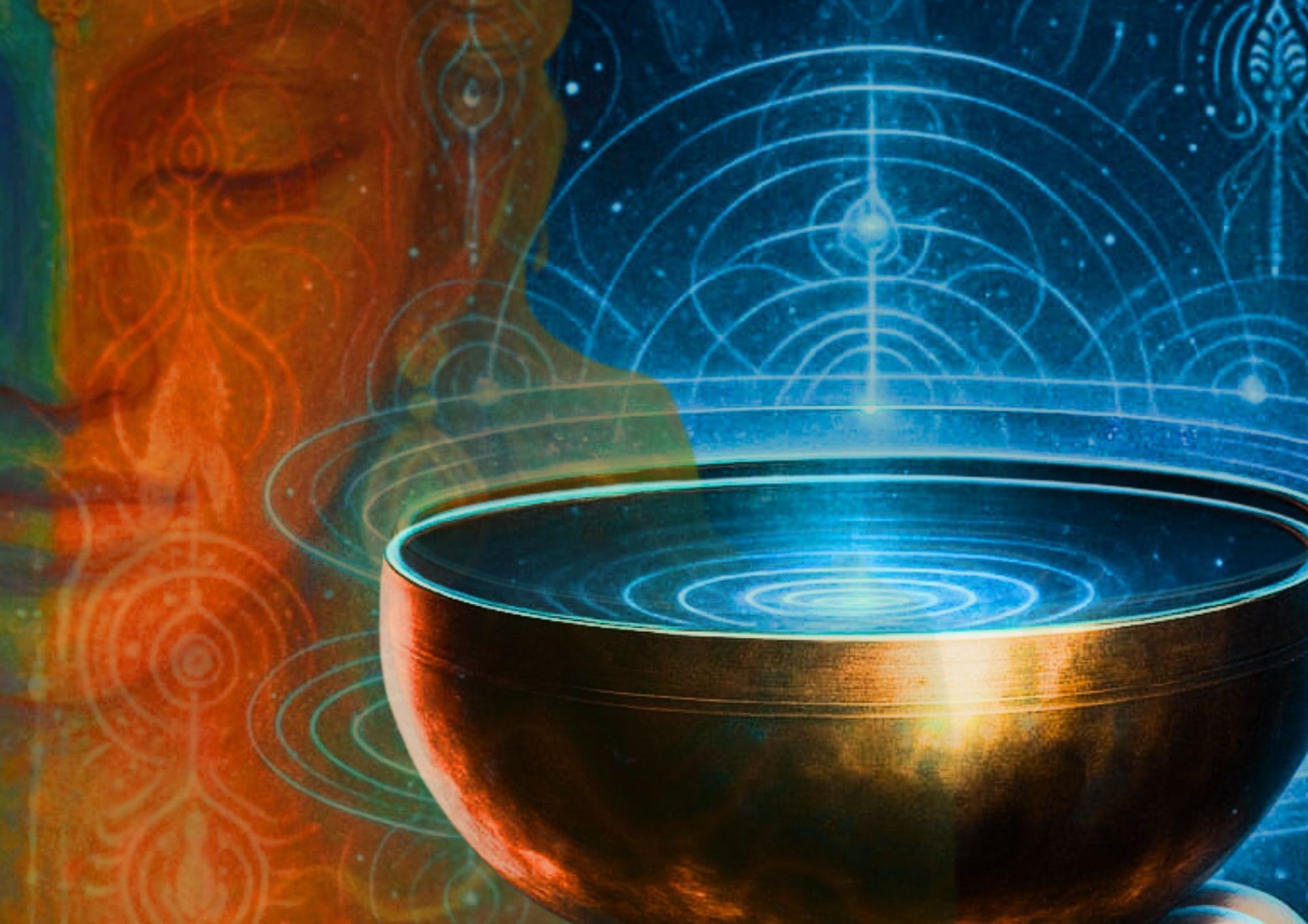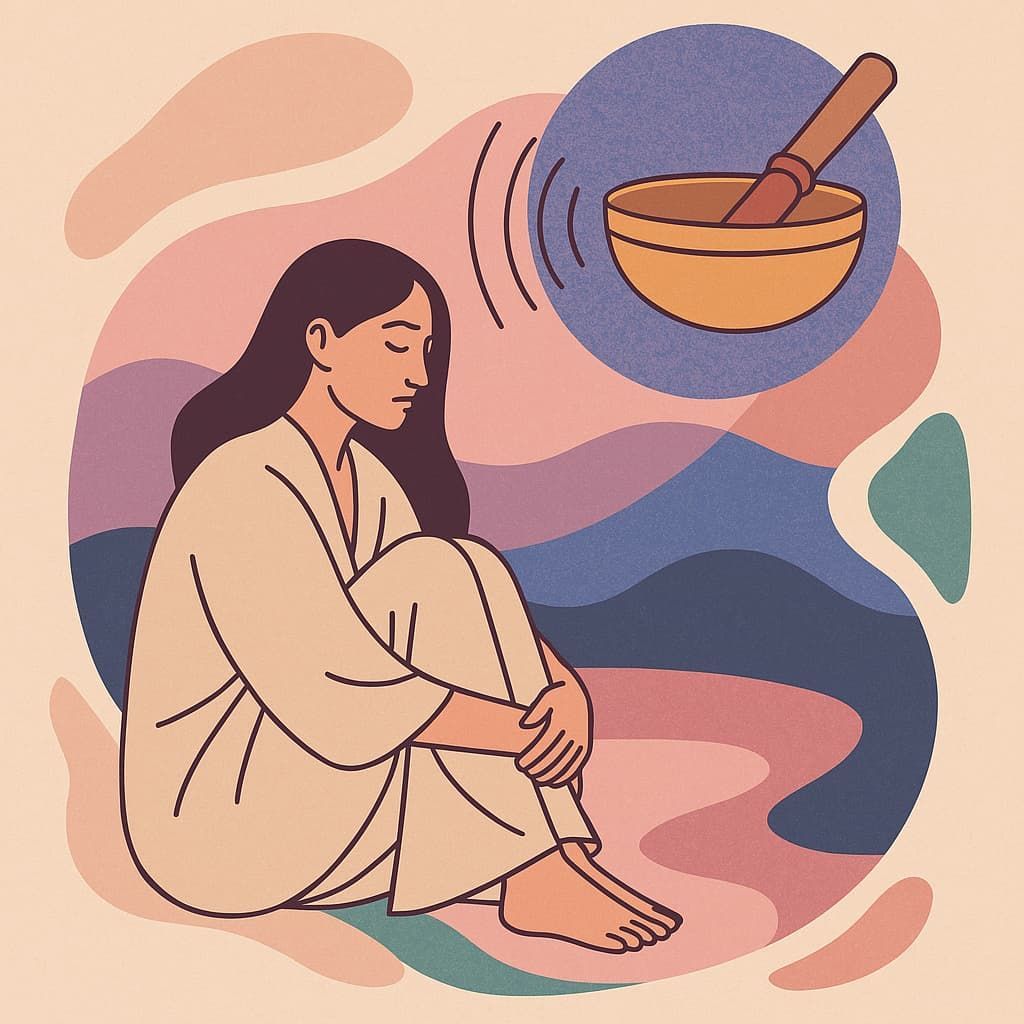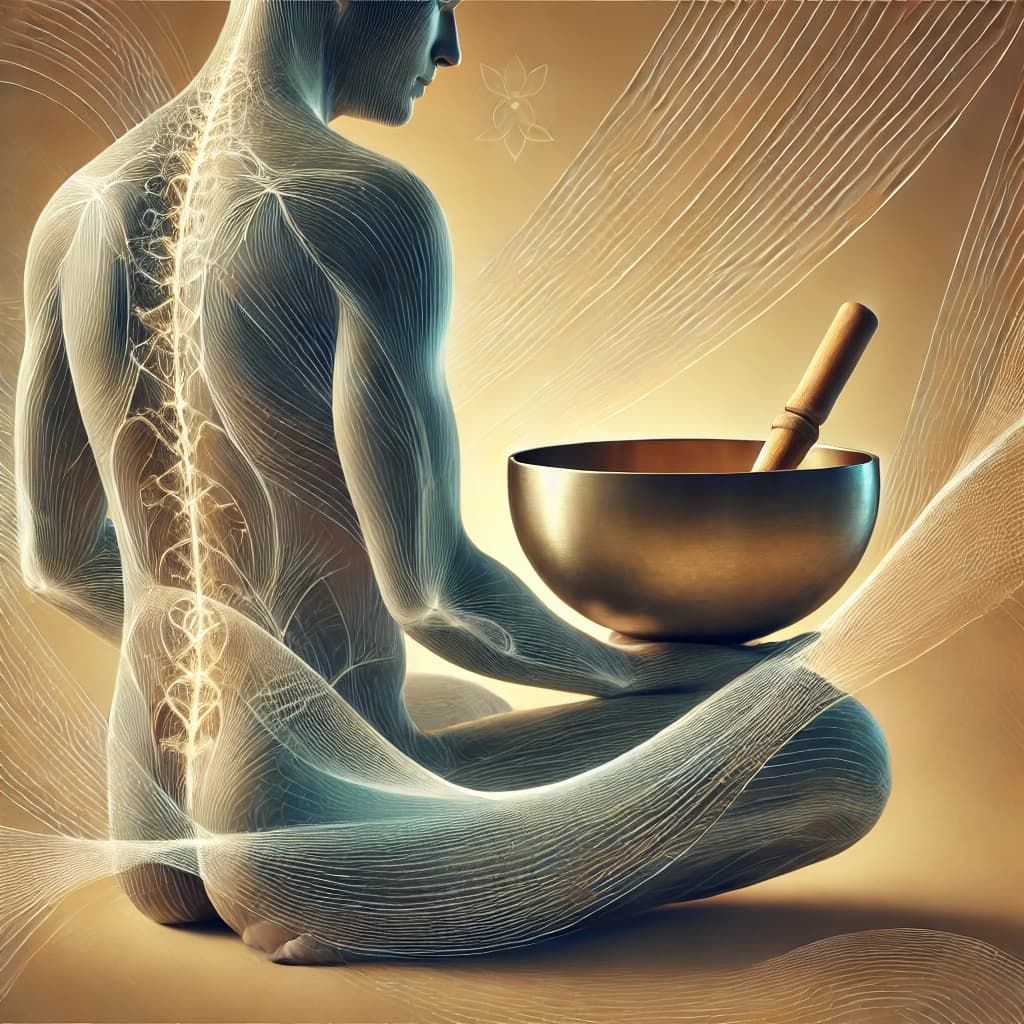Unfolding the Bindu: The Energy Points of the Body & the Transcendence Revealed by Tibetan Singing Bowls
The Power of the Bindu

At the heart of all living beings lies a mysterious point, the Bindu. While chakras are well-known energy centres often visualised as spinning wheels along the spine, bindus are more subtle and mysterious. They are points. Singular, still, and deeply concentrated. A chakra moves; a bindu intensifies. A bindu does not spin or even vibrates, it holds the essence of vibration itself. To understand the bindu is to shift from movement to stillness, from circulation to origin. To approach the bindu is to return to the seed before the motion, to the pulse before the wave.

New explorations in physics, cosmology, and sound therapy invite us to revisit our understanding of the vital energies, not as static forms, but as emergent patterns of vibration.
- The universe, from galaxies to cells, seems to organise itself not merely through distance and dimension, but through resonance, frequency, and quantic motion.
- This is especially true in tantric cosmology, which describes the universe as born not from form but from vibration, from a point of origin known as the Bindu.
- The Bindu is not a dead dot. It is the seed of unfolding, a point of stillness filled with latent movement.
In tantric vision, the Bindu is the center from which space spirals, sound vibrates, and consciousness manifests.

The Body as a Field of Bindus
In the human body, the Bindu is not merely symbolic. It refers to precise static centres that are both physical and subtle, sites of transmission, transformation, and condensation of life force.
Among the most central are:
- Bindu Visarga (at the back of the crown): known as the “dripping point,” it is said to secrete amrita, the nectar of vitality and inner rejuvenation.
It is connected to immortality, cooling energy, and often awakened through sound and breath practices.
- Ajna Bindu (third eye center): the point of mental convergence, the command center of consciousness, where thought and intention gather.
It’s associated with intuitive vision, inner hearing, and the origin of focused vibration.
- Lalana Bindu (upper palate/throat region): where amrita gathers before descending. It links the inner ear, the voice, and the subtle breath, often activated through mantra recitation or nasal resonance.
- Hrid Bindu (heart center): not only a chakra, but the silent center of feeling, where the pulse of awareness is said to be heard directly.
Each Bindu is a knot and a gate, a place where stillness condenses into motion, and where sound echoes back into silence. To meditate on the Bindu is to enter a portal of refinement and return , to feel the body not as solid matter, but as a resonant network, vibrating around points of coherence. It is in this sense that the body functions as a living Yantra, a sacred diagram made not of lines and angles, but of relationships and resonant points.
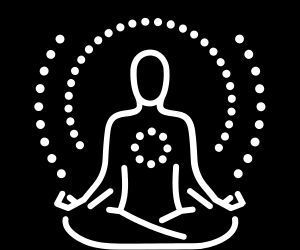
Tantric Geometry and the Living Field
Where classical geometry speaks in lines, angles, and distances, tantric geometry works with fields, centres, and flows. Instead of measuring parts of a fixed whole, it reveals how energy organises itself through resonance, stillness, and motion.
In this paradigm, the Bindu is a empty center that unfolds in prismatic waves of creation.
Singing bowls, as vibratory instruments, embody this principle. They express a geometry of:
- origin without measurement,
- movement without displacement,
- relation without reduction.
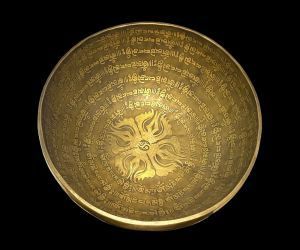
A singing bowl is a circular instrument traditionally made from a blend of seven sacred metals. Its shape resembles a deep, rounded vessel, often open at the top, with a slightly flattened base.
When struck or rubbed with a mallet, the bowl emits a resonant tone that seems to expand outward in concentric waves. The vibration originates not from the center, which remains almost still, but from the outer edges, which oscillate with visible intensity.
This dynamic, a stable center and vibrating periphery, reflects an ancient understanding of energy: where silence gives rise to sound, and stillness holds the key to movement.
What makes them "singing" bowls is not only the tone produced at impact, but the sustained resonance that follows, a kind of self-generating echo that continues to shimmer long after the initial contact. The bowl, in a sense, sings itself, revealing that sound is not just produced, but unfolded from form. The singing bowl is simple in shape yet rich in function. It is tuned to produce a fundamental frequency that resonates through the body, space, and mind. Its circular form appears to obey the principles of classical geometry with familiar constants, but it tells us only how much metal there is to measure, not how that metal sings.
This is not geometry as we know it from school. This is geometry as organised consciousness, as the pattern through which sound becomes space. Rather than using traditional measuring tools such as Pi to describe how much sound exists, tantric geometry asks:
> What is arising, where is it going, and how does it return to its source?

Embracing the Tantric Pulse
The Bindus within & without us intertwine into a living geometry of relation, emergence, and wholeness, a pulsating energy web that unfolds through vibration, breath, and consciousness.
In the tantric view, the body itself becomes a sacred field where these bindus are 'holding their spot', connecting the infinite and the corporeal. Singing bowls embody this meeting place at the palm of our hands, where the precision of metal softens into the warm flow of resonance and lived experience.
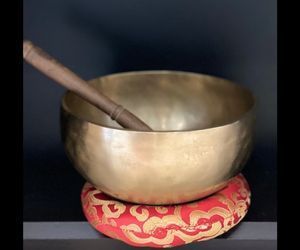
Practical Exploration — Rooting Sound in the Perineal Bindu
In many Tantric traditions, Bindu refers to a point of origin, a node of subtle energy where vibration, form, and awareness converge. While the Ajna Bindu (between the eyebrows) is more widely known, there are several Bindu points throughout the body, each with unique energetic qualities.
One of the most foundational is located near the perineum, at the base of the spine. It is sometimes called the Yoni Bindu, the Muladhara Bindu, or simply the Earth Point. This is where grounding, safety, and inner silence are seeded.
Although rooted in a physical zone, the Bindu is not limited to a visible organ — it is a felt center, sensitive and alive, and it can be cultivated through subtle awareness.
This short practice can be done anywhere, even lying down. It’s an invitation to reconnect with deep body presence, without judgment or expectation.

Level 1 – Awareness and Release
Sit cross-legged or on your knees.
Bring your attention to the area between the genitals and anus — the perineal zone.
Let your breath be soft.
On the inhale, simply feel.
On the exhale, allow a subtle inner release — maybe through a soft humming or just through a silent letting go.
Repeat when you feel ready.
No tension, no forcing. Just return.
You can also do this lying down, especially before sleep.
The key is to observe sensation without trying to modify it.
Just stay close to what you feel, and keep coming back to the base.
Duration: 5–10 minutes.
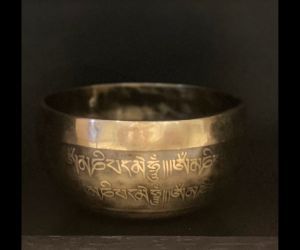
Level 2 – With a Singing Bowl
You can enhance this practice by using a singing bowl of any size.
Place the bowl beside you, in front of you, or even directly on your lower belly or pelvic region, using a soft cushion if needed.
Gently strike the bowl.
Let the vibration spread toward your base.
Breathe with the resonance — not trying to control it, just feeling it echo and settle through your root.
The bowl can help loosen stored tension, wake up sensation, and amplify subtle awareness in this region.
Take your time. Let the sound guide you home.
Duration: 5–10 minutes.






